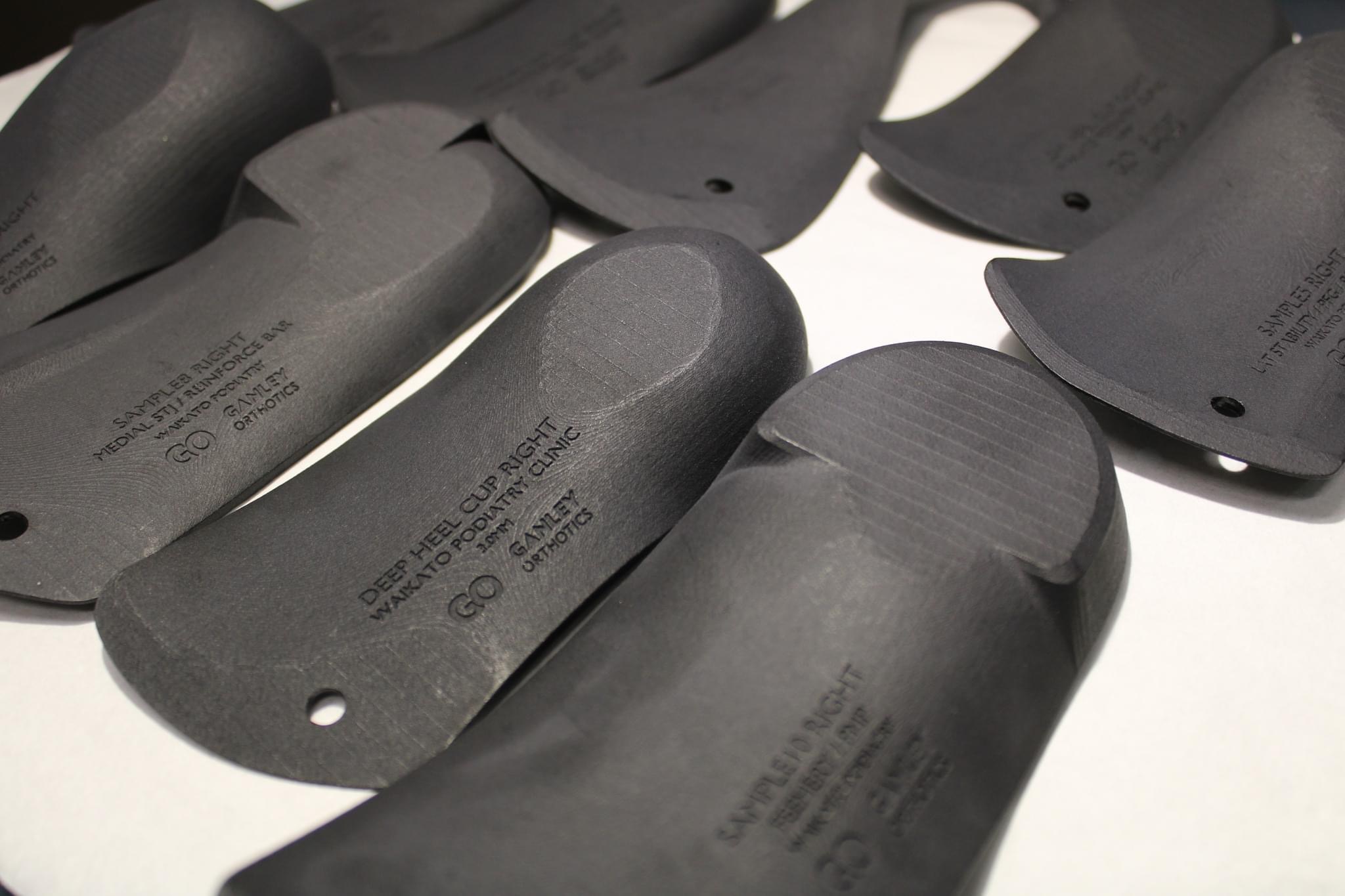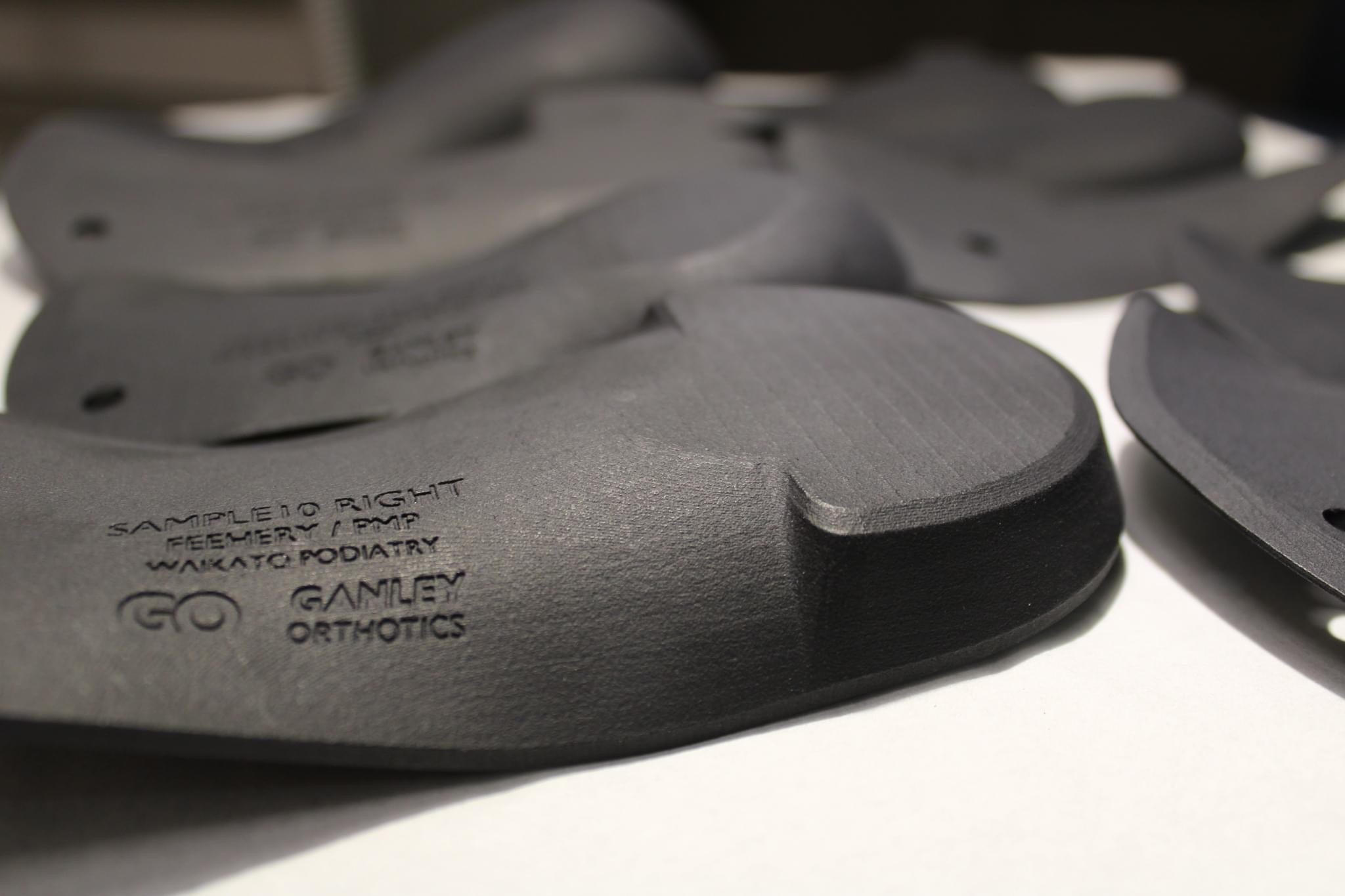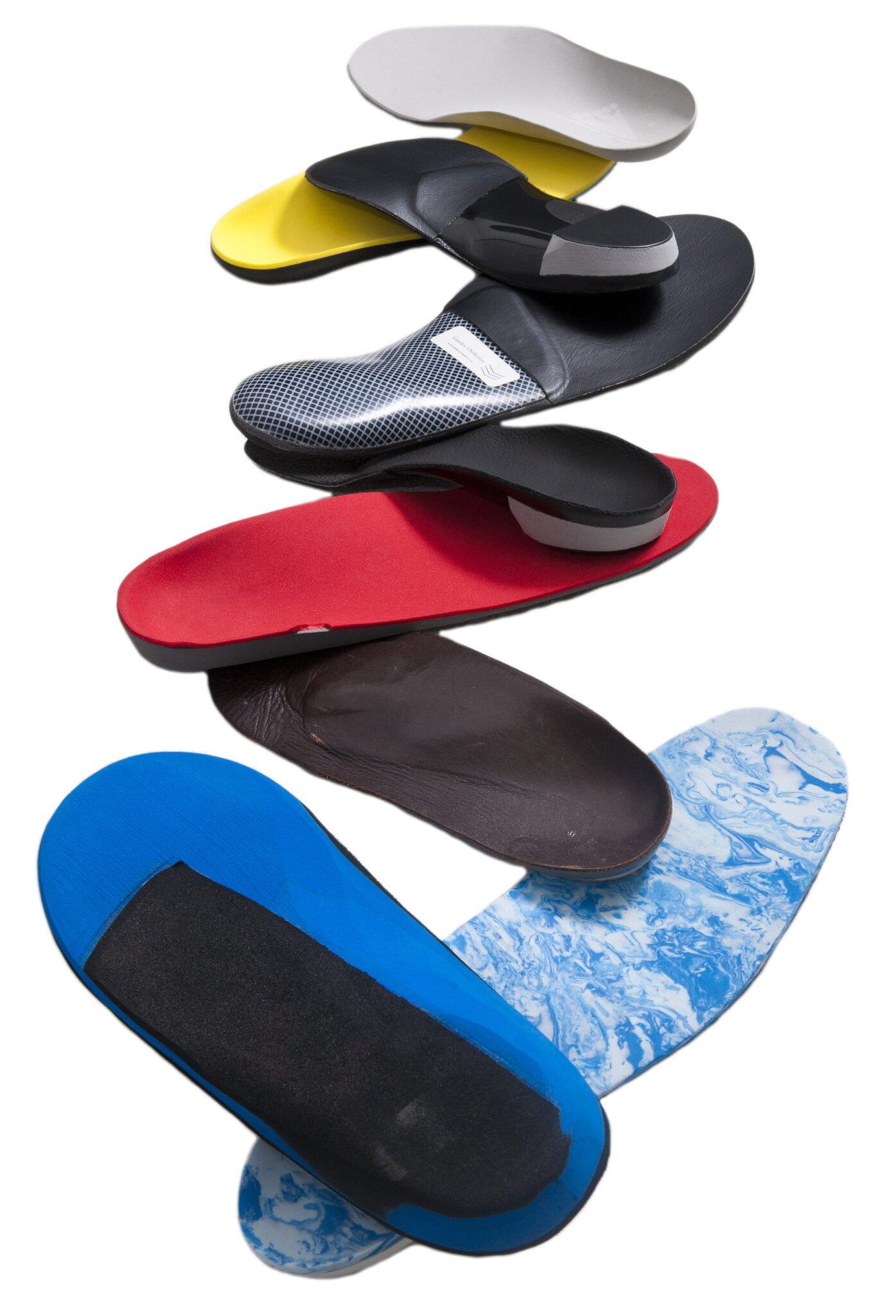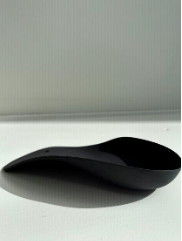How Do Orthotics Work?
Foot orthotics go by many names these days: insoles, shoe inserts, arch supports, custom foot orthoses, and orthotic devices - to name a few. They’re also successfully used to help manage a range of lower limb conditions, from those affecting your spine to your big toe joint and everywhere in between. So, what exactly are foot orthotics, and how do they work?
As a podiatry team that uses orthotics extensively here at Waikato Podiatry , here’s the ‘inside scoop’ on custom foot orthotics, when we use them (where clinically indicated - which is not for everyone) and how they work to help our patients recover so they can stay active and enjoying the sports and activities they love.
How Do Custom Foot Orthotics Work?
To understand how custom foot orthotics work, we must be clear on what they are - and perhaps even more importantly, what orthotics are not. Despite being commonly referred to as arch supports, it’s uncommon for the primary purpose of custom foot orthotics to be just supporting the arches of the feet.
Customised orthotics are medical devices that sit inside the shoe to alter the way the foot is loaded, and hence the stress that is placed on a person’s bones, joints, muscles and tendons. By changing the way that forces are applied to the feet in a very precise and intentional way (as prescribed by your podiatrist), we’re able to ease the stress on damaged tissues or joints so you can recover - and stay more comfortable in the process.
Yes - the true key to orthotics isn’t just about support or alignment (although they typically do both of these things), but about your foot biomechanics, which is defined as “the forces acting on and generated within the body and of the effects of these forces on the tissues.” Raising the arch or ‘realigning’ the feet may help achieve the loading changes we want to see, but it is not the end goal.
Now to the question of how foot orthotics work. Orthotics are prescribed with very specific features by podiatrists that understand the complexities of how the feet and legs work together to produce movement and what needs to be modified to produce a beneficial result for you. When these orthotics are placed inside your shoes, they get to work and you start experiencing these benefits. Seeing orthotics in this way may help explain why it’s important that they are prescribed by an experienced podiatrist (ideally that works in sports medicine like we do here), and why the “orthotic inserts” available from the pharmacy or supermarket will do very little aside from give you some temporary cushioning. One of the specialists we work with describes the importance of customised orthotics in a great way: "you don't have over-the-counter feet so why would you use over-the-counter insoles?"
Yes, there’s just nothing personalised about the ‘one-size-fits-all’ pre-packaged options to help address the real underlying injury you have, nor the causes and contributing factors to the problem. And if these underlying issues aren’t addressed, you risk a slow recovery, the problem recurring on-and-off for months or years, or the problem even getting worse and more painful.


Do Orthotics Really Work?
When orthotics are properly prescribed and made, taking into consideration the unique characteristics of your feet as well as the problems and symptoms you’re having, then yes. Orthotics can be extremely effective, which is reflective of the results we see in our clinic.
The way we use orthotics here at Waikato podiatry clinic is that they are both central to our patients’ treatment plans (where clinically indicated), and also seen as an adjunctive treatment. This means that alongside orthotics, we must consider other factors such as muscle tightness or weakness, footwear selection, training errors, your injury history, and other systemic and localised issues like gout or rheumatoid arthritis.
When discussing if orthotics really work, it’s important to bear in mind that they’re not a ‘set and forget’ kind of treatment. It is common for our podiatrists to make adjustments to your orthotics over time, including if we’re not seeing the desired results at the beginning stages of your treatment. In this way, we’re always ensuring that they’re working optimally for you.
Our podiatrists will only recommend using foot orthotics if we know they can help in your unique circumstances. Part of the orthotic process involves completing a comprehensive lower limb assessment where we check everything from your muscle strength to your foot posture and the levels of movement available in the joints of your feet. We also conduct a treadmill gait analysis to get a deeper insight into your foot biomechanics and how the orthotics should be made to help. The final orthotic product is as specific to your feet as prescription glasses from the optometrist are to your eyes, and similarly, only work while you’re wearing them.
When discussing whether orthotics work or not, it’s also important to define the goal of the orthotics. If the goal is to be 100% pain-free, recovered, and moving like you were pre-injury, then we rarely prescribe orthotics as a standalone solution. We view orthotics as a key part of an overall management plan that may involve everything from education about how to reduce certain loads on your feet, to strapping, changing the shoes you wear day-to-day, strengthening or stretching exercises, and other forms of soft tissue therapy.
This insight into orthotics may also help explain why we hear different stories of people whose orthotics worked brilliantly for them versus others that had little to no effect. When these messages are shared, it presumes that everyone is talking about the same kind of orthotics, made by an experienced podiatrist, and together with a personalised treatment plan that is adhered to closely. The reality is that in most cases, when we hear a patient has had orthotics in the past that they didn’t find particularly beneficial, we also uncover that the orthotics they were referring to either came straight out of a packet (not prescribed or professionally adjusted in any way), or that through no fault of their own, they were left with the impression that custom orthotics are a complete fix. This means they missed other important parts of a complete treatment plan, leaving problems unaddressed and resulting in pain and discomfort continuing.
The underlying message? There’s a lot more than meets the eye when it comes to getting orthotics, and it’s very important to work with a team that is both experienced with orthotic prescription, and takes a whole-person approach to care and treatment. For us, it’s not just about getting you out of pain now, but keeping you out of pain and doing the things you love for the years to come.
Orthotics Frequently Asked Questions
How Many Hours A Day Should You Wear Orthotics?
Much like prescription glasses, orthotics only work while you’re wearing them. Your podiatrist will give you clear instructions around wearing your orthotics when you get them fitted, but our general rule of thumb is that while you have pain or an injury, to keep wearing them as much as possible, both inside and outside the house. This is because they’ll be working to reduce the stress on the injured area, thereby supporting your recovery. Orthotics also have a ‘wear in’ period when you first get them that your podiatrist will talk you through.
Do Orthotics Work Immediately?
Yes, orthotics work to modify the load your lower limbs take on from the moment you stand on them. Just note that this doesn’t mean the pain or problem is immediately fixed. If you have an inflamed or damaged tendon or tissue, it will still take time for the swelling to go down and the healing to progress, hence it will take time for your symptoms to resolve.
Do Orthotics Work For Flat Feet?
Yes, if you’re experiencing pain or symptoms where having flat feet (a ‘pronated’ foot type) is a primary cause, then we find that orthotics are able to help in most cases through their ability to reduce stress on specific tissues with every step. Here’s a good example of how orthotics work for a condition often associated with a flat foot posture.
Do Orthotics Work For Plantar Fasciitis?
Plantar fasciitis is one of the most common causes of heel pain that our podiatrists see and treat. It causes pain on the bottom and inside of the heel that can radiate into the arch. This pain tends to be worse in the first few steps in the morning (or when standing after rest), and eases as you continue to walk and “warm up” the feet.
Custom foot orthotics are a first line treatment for plantar fasciitis heel pain, as they are able to effectively modify the way the feet are loaded and reduce strain off the plantar fascia. This is confirmed by meta analyses of the research. In cases of uncomplicated plantar fasciitis, we are able to get our patients pain-free and back to full function using a combination of orthotics, good footwear and other therapies we have available, depending on the foot characteristics and person’s needs.
Do Orthotics Work For Bunions?
This depends on your treatment goals. If the question is whether orthotics are able to reduce a prominent, rigid bunion back to a straight toe appearance, then the answer is no. When bunions are rigid, there is little that can be done to achieve this outside of surgery. There’s a lot more that can be done when bunions are still early and flexible. What orthotics can do is change the forces being applied to the big toe joint with every step, which can slow down or even pause the progression of your bunion (assuming all other causative factors are also being addressed). Bunions are a complex topic because there’s a lot to consider and many factors that contribute to their cause, so your podiatrist will be able to give you a clearer answer during your appointment after assessing the characteristics of your feet and toes.
How Long Does An Orthotic Last?
This depends on the number of variables: what they’re made out of (as we can select several different materials based on what will best benefit your feet), what they are used for, and the physical composition of the person using the orthotic. We recommend that orthotics are reviewed every 12 to 18 months to ensure that they still fit the purpose and meet your requirements.
Will The Orthotics Fit In All My Shoes?
Orthotics are generally manufactured to fit a specific range of shoes, with common shoe categories being sport shoes, dress shoes and work boots. While orthotics are designed to be interchangeable between different shoes within that category, every shoe is different when it comes to their fit and the construction of their last. This means they may not necessarily be able to be freely transferred between categories - it will all depend on your specific shoes.
Won’t Orthotics Make My Feet Weak?
There is no evidence to suggest that orthotics weaken your feet. Orthotics are used to treat pain. Having foot pain, on the other hand, is immobilising and often reduces the amount of exercise and function you can do. Using orthotics to reduce your pain and improve your activity levels will therefore ultimately help make your feet stronger by letting you work those muscles.


To book an appointment with our podiatry team here at Waikato Podiatry, call us on 07 838 0003, or use our online booking portal.


